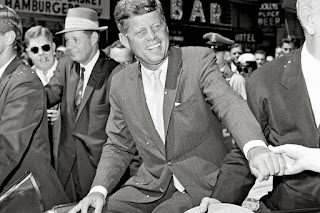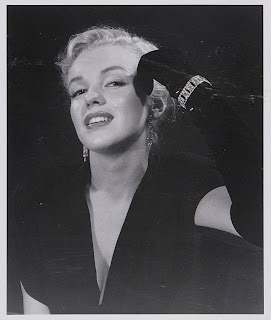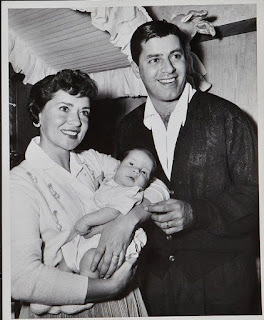Algorithms conceived by cutting-edge computers still fail to predict romantic attraction. While such algorithms have been able to accurately predict the weather, University of Utah researchers found poor results when it came to predicting desire. A new study finds artificial intelligence simply can’t predict attraction between two people. “We found we cannot anticipate how much individuals will uniquely desire each other in a speed-dating context with any meaningful level of accuracy,” says study lead author Samantha Joel in a press release. “I thought that out of more than 100 predictors, we would be able to predict at least some portion of the variance. I didn’t expect we would find zero.” “It may be that we never figure it out, that it is a property we can never get at because it is simply not predictable,” says co-author Paul Eastwick of the University of California. “Romantic desire may well be more like an earthquake, involving a dynamic and chaos-like process, than a chemical reaction involving the right combination of traits and preferences.” Another different research shows that "partners who are responsive to each other outside the bedroom are able to maintain their sexual desire," says Gurit Birnbaum, psychology professor at the Interdisciplinary Center: "Responsiveness--which is a type of intimacy--is so important in a relationship because it signals that one is really concerned with the welfare of the other." Responsive partners are willing to show understanding at a deep level. They make the relationship feel special which is, at least in Western societies, what people seek from their romantic relationships. In a study published in the Journal of Personality and Social Psychology, Birnbaum and coauthor Harry Reis, professor of psychology at the University of Rochester, report the "intimacy-desire paradox" lies in the contradiction between intimate and familiar relationships that many people strive for. "Sexual desire thrives on increasing intimacy and being responsive is one of the best ways to instill this elusive sensation over time; better than any pyrotechnic sex," Birnbaum says. Source: journals.sagepub.com
The staircase scene in Frank Tashlin’s sex-swap farcical updating of the Cinderella fairy tale Cinderfella (1960) resulted in Jerry Lewis having a heart attack. The stair scene was shot with one take of Jerry Lewis going down the stairs and one take going up. He ran up the stairs (63 steps) in less than nine seconds and collapsed at the top. He was taken to the hospital and spent four days in an oxygen tent with his second cardiac event. This delayed filming for two weeks. On the evening of the ball, Fella (Jerry Lewis) is turned into a handsome prince and sent to the ball in a limousine. The great big band leader Count Basie is playing at the ball when Fella makes his grand entrance. The young man quickly gains the attention of the Princess (Anna Maria Alberghetti). The night is cut short when midnight strikes and Fella flees, losing his shoe along the way. The rest of the film plays out just like the classic fairytale! Jerry Lewis is priceless when it comes to engineering clever, complex, high-energy sight gags. A testament to his versatility here is mimicking the musicians as he listens to a song on the radio in the kitchen. Source: www.roguecinema.com
By the time I was sixteen, I was a high-school dropout and I worked the Catskill resorts as a busboy and a tummler—the guy who makes faces and gets the guests in a good mood for the real entertainment. That’s what I wanted to be, the real entertainment. But what was I going to do? I always saw the humor in things, the joke possibilities. At the same time, I didn’t have the confidence to stand on a stage and talk. One night, at a New Jersey resort where my parents were doing their act, a friend of mine, Lonnie Brown—the daughter of resort hotelkeepers Charlie and Lillian Brown—was listening to a record by an English singer named Cyril Smith, trying to learn those classy English intonations. I had a crush on Lonnie and, attempting to impress her, I started to clown around, mouthing along to the music. Lonnie broke up, and that was music to my ears. An act was born. I hit on a genius solution—or what seemed at the time like a genius solution. After a couple of hard years on the road, playing burlesque houses where the guys with newspapers on their laps would boo me off the stage, I became a showbiz veteran (still in my teens) with an act called “Jerry Lewis—Satirical Impressions in Pantomimicry.” I’d do Sinatra singing “All or Nothing at All.” I knew where every scratch and skip was on every record, and when they came up, I’d do my shtick to them. I had gotten better at contorting my skinny body in ways that I knew worked comedically. I practiced making faces in front of a mirror till I cracked myself up. God had given me something I always felt: funny bones.
Maybe Patti and I stayed together as long as we did (thirty-six years) because she called me on the carpet when I was indiscreet. She'd let me know that I’d face temptations on the road and, being a man, I’d give in to them. I had plenty of strengths, but even the strongest men will get their heads turned around. There was never any stopping my partner Dean, and there was no stopping women once they’d set eyes on him! Imagine—just months before Dean and I played the Copa and Slapsy Maxie’s, I was lucky to have fifty bucks to my name. Now I was walking down Fifth Avenue with three grand in hundred-dollar bills in my pocket and I got Gloria DeHaven on my arm. It was fantasyland... I said to Dean it was over, we would’ve only another couple of years and then we would’ve been knocked out of the ring like Joe Louis.
I get pleasure from giving to those I love. That’s my pleasure. But I’m perceptive enough to realize that there are those who have felt oppressed by my generosity. It’s not always easy to get when you can’t give back to the same degree. Dean always used to take me to task for what he called 'flag-waving.' That could mean any number of things. It could mean giving money to the needy. We would walk down the street together, and I literally couldn’t pass a man with his hat out. If we walked back the same way and the same guy was still there, I’d hit him again. Dean would say, “That fucker can get a job! What the fuck are you givin’ him money for?” At the same time, I think he was happy to see me do what he couldn’t, even when he wanted to. Flag-waving was showing your colors emotionally. It was the exact opposite of everything Dean Martin had been taught to feel and to show. I knew I could sometimes be a bit much for him. I’d always worn my emotions on my sleeve, but as our career skyrocketed, the sleeve became a size extra large. I was constantly rewarded for showing my emotions. Did I feel bad that Dean was overshadowed? Sure I did. And so the more I got, the more I tried to give to Dean. But I recognize—now, fifty years later—that being at the receiving end of outrageous generosity isn’t the easiest thing in the world. —"Dean & Me" (2005) by Jerry Lewis
Although he had evolved, that other Jerry (the man-child) had stayed still and precious inside him. That Jerry meant "immortality," Lewis said. "He's forever. I have always said that I cannot allow the child within me to die. It's kept me alive." When his daughter Danielle came into the room, he bent down, and belted out: "Child! Beautiful baby. Come to Dad." It was this baby, he said, that had provided the essential balance in his life. After six sons, she was the miracle baby. He cried as he said: "She gives me a B-12 shot when she looks at me. She gives me worth, value. And now I'm frightened to death that I only have so much time. And I think, why didn't I do this when I could have had a long time with her." —"At Home with Jerry Lewis" (1993) by Craig Wolff
As The Women’s Room (1977) by feminist author Marilyn French makes clear, sex was seen as one of the most important things in life in fifties America. Certain publishing events suggest this: the two Kinsey reports (on men, 1948; on women, 1953), the first issues of Confidential magazine in 1951 and Playboy in 1953; best-selling novels such as From Here To Eternity 1951, A House is Not a Home 1953, Not As a Stranger 1955, Peyton Place 1956, Strangers When We Meet 1953, A Summer Place 1958, The Chapman Report 1960, etc. The Women's Room encompasses many ideas central to the Second-Wave Feminism movement that emerged in the 1960s.
Marilyn Monroe's lengthy beauty ritual was not about the makeup per se, said George Masters, Marilyn's make up assistant in 1962, but about getting into the mood to be "Marilyn" in public, and took time to "woo the sensual persona into being." When "Marilyn" suddenly appeared as he put on her lipstick or adjusted her dress, it was an incredible metamorphosis. Many years after her death, Masters said he still got goosebumps thinking about it. No stranger to Hollywood, John F. Kennedy had always been captivated by Marilyn Monroe. In October 1954, while undergoing spinal surgery in a New York hospital, visitors to his room were treated to a poster of Marilyn hung over his bed. The poster featured Marilyn in a tight white blouse and blue shorts, her legs spread wide apart. JFK and Marilyn were both charismatic and complex. Marilyn was particularly complicated and spent her entire life looking for a missing person: herself. The most constant male figure in Marilyn’s life had been Joe DiMaggio. Because he possessed a strong center and because he loved her, DiMaggio could cope with Marilyn’s frailties. But he just couldn’t cope with the movie racket or the Hollywood celebrity scene, which meant that they couldn’t be husband and wife. In 1967, five years after Monroe’s death, Arthur Miller confessed: “Marilyn’s addiction to pills and drugs ultimately defeated me. If there was any key to her despair, I never found it.”
Comedian Joey Bishop, a sometime member of Sinatra’s Rat Pack, saw Marilyn at Frank Sinatra’s house in early June 1961. “I’d gone over there for our weekly poker game,” said Bishop. “Dean Martin, Sammy Davis Jr., and two other guys were there, and in the middle of the game, this tiny white puffball of a puppy waddled into the room. ‘New dog?’ Dino asked, and Sinatra said, ‘It’s Marilyn Monroe’s dog. She named it Maf, as in Mafia.’ And then Marilyn came into the room, evidently looking for the dog. And the thing is, she was completely nude except for a pair of emerald earrings that Sinatra had given her. We froze, and she stopped dead in her tracks. I could tell that Sinatra wasn’t too pleased about her not wearing any clothes. I’d heard she’d just recently undergone some minor gynecological surgery at Cedars of Lebanon, but she’d seemingly recuperated because she looked pretty damn good. After saying hello to everyone, she gathered up the mutt and went back into Sinatra’s bedroom. Marilyn was perhaps a bit afraid of losing her great sex appeal, and I couldn’t help but think that being with Sinatra confirmed for her that she still had it—in spades. I’d seen her with Sinatra at his home in Palm Springs and at the Palm Springs Racquet Club. Another place Sinatra brought Marilyn was the Cal-Neva Lodge at Lake Tahoe. But I can also tell you that the most important man in Marilyn’s life was Joe DiMaggio. His love for her knew no limits. And though their marriage ended in divorce, she loved him as well.” —"Joe and Marilyn" (2014) by C. David Heymann
"At first I was hesitant to go into modeling because I didn’t think I was pretty enough. But they kept bugging me until my boredom finally enticed me to go see an agent that had been recommended to me. Her name was Pat Allen and she turned out to be a great lady. She raved on about how beautiful I was and signed me up on the spot. She soon became a wonderful friend and a trusted confidante. I posed for numerous magazine covers and ads and quickly received a lot of attention from the New York Press. Famous journalists such as Walter Winchell, Earl Wilson, Dorothy Kilgallen, Hyman Goldberg, Hal Boyle and Carl Gaston were soon keeping tabs on me and writing about my latest escapades in the press. I’ll never forget the first time I met Marilyn Monroe. It was at a bar near the Actors Studio in New York City. She was dressed up in her usual disguise of black wig, scarf, and dark sunglasses. The early 1950’s was a great time to be living in America. I don’t think that era will ever be captured again. I was wearing my body hugging Lana Turner sweater, tight slacks and a light fur coat. I loved the way the fur was caressing my body. It made me feel all warm and cozy. A fur coat had been my dream since childhood so with my first paycheck from modeling, I bought one."
"As I strolled up 5th Avenue towards my acting class, I once again was amazed by the energy and vibrancy of New York City. In just a few short years I had gone from being a little country girl from the hills of Arkansas to being a famous model, a trick shot golf artist and an actress. I had appeared on Broadway, been featured on the covers of numerous magazines and played golf with the likes of Bob Hope, President Eisenhower and the Duke of Windsor. I thought I’d done pretty much everything there was to do. Little did I know, I was about to engage in the biggest thrill of my life: Meeting and becoming friends with Marilyn Monroe. She thought I was crazy for turning down a lot of the offers that I got. She told me many times, “Jeanne, you have to take anything that comes your way in the beginning. You have to keep your name and face out there or else the public will forget you.” I knew she was right but I was lazy and scared most of the time. Marilyn used to call me at all hours of the night because she had problems sleeping. I had the same problem. She felt she could relate to me as I had been married to a hot tempered Italian as well. After Marilyn broke up with Arthur Miller she moved back to Hollywood. That was our wild period together. We engaged in such outrageous and audacious behavior that it still shocks me when I think back on it." —"My Wild, Wild Life as a New York Pin Up Queen" (2006) by Jeanne Carmen & Brandon James
John F. Kennedy was confident that Americans—“whose basic good sense has always prevailed”—would reject those “counsels of fear and suspicion.” Theodore Sorensen (adviser and speechwriter for President John F. Kennedy) was weighted down with the melancholy burden of history. He knows that John F. Kennedy lived for a purpose; he just can’t bring himself to believe he died for one. “It’s terribly painful. If I can know that my friend of eleven years died as a martyr to a cause, that there was some reason, some purpose why he was killed then I think the whole world would feel better.” Sorensen makes it known when the subject arises in conversation that it is still too painful for him. President Kennedy had instructed the CIA to immediately stop all raids against Cuba, to make sure that no flying sparks from the agency’s secret operations set off a nuclear conflagration. But, once again, the agency asserted its right to determine its own Cuba policy, independent of the president’s will. In defiance of Kennedy’s order, Bill Harvey mobilized sixty commandos—“every single team and asset that we could scrape together”—and dropped them into Cuba, in anticipation of the U.S. invasion that the CIA hoped was soon to follow. The 1962 Havana conference, observed Sorensen, “brought to my mind and Arthur’s and Bob McNamara’s as never before, how close the world came to stumbling into a nuclear exchange that would have escalated very quickly on both sides to a nuclear holocaust that would have left both countries in ruins, and soon most of the world as well.” The Kennedy brothers, Sorensen continued, “were certain that no nuclear warheads were in Cuba at the time. They were wrong.” If Kennedy had bowed to their pressure, Sorensen grimly concluded, the world would have been reduced to smoking rubble. —"The Hidden Story of the Kennedy Years" (2007) by David Talbot





























































